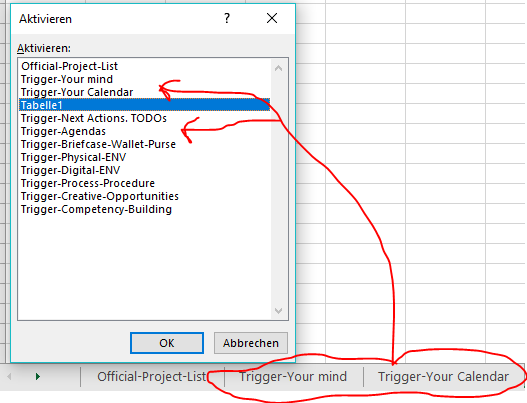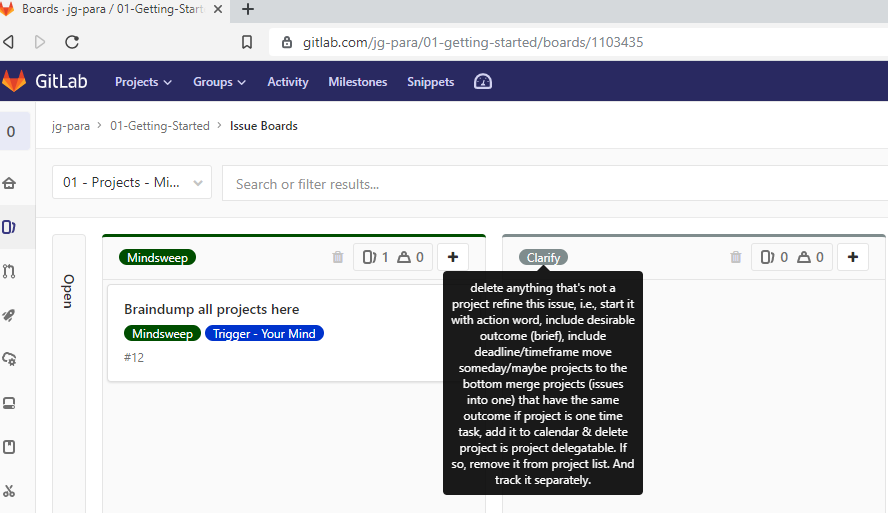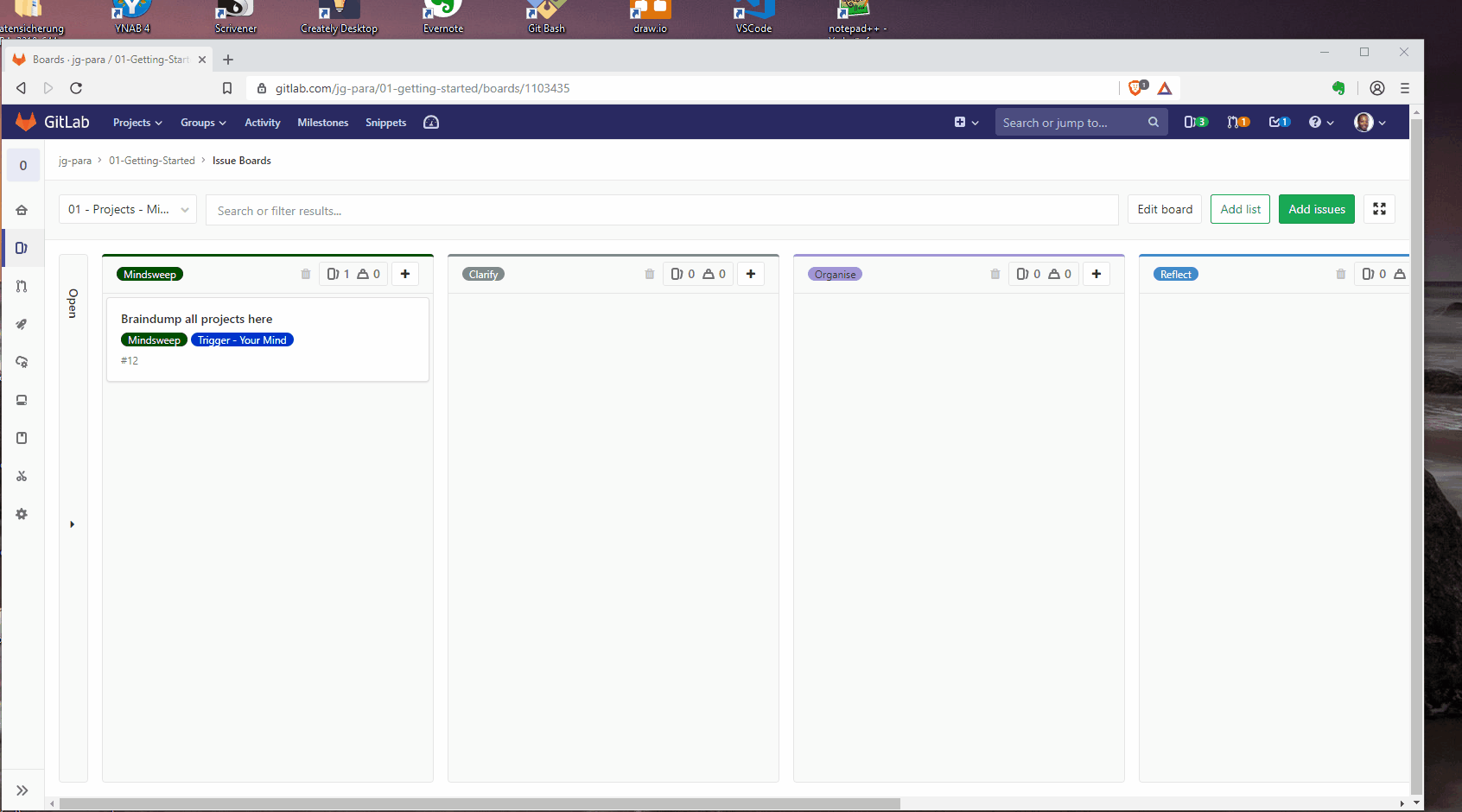Adapting to PARA using GitLab
It’s almost 2 months since I started walking through Tiago Forte‘s series on P.A.R.A Method (Projects. Areas. Resources. Archives) and implementing it. I’ve got Ben Mosior and Tasshin Fogleman to thank for the connection.
I loved these series, especially the fifth one, the Project List Mindsweep, because it broad enough to cover both home and professional life, and fine enough to manage “actionable systems” (Todo lists) and non-actionable systems (where we store reference information), as read in:
the Project List was the lynchpin of not only P.A.R.A. and your broader PKM (personal knowledge management) system, but to your entire working life. . . your Project List is transmitting information between your actionable and non-actionable systems
Tiago Forte’s Project List Mindsweep
Pain points from Friction
The article and the corresponding Evernote templates were a great help. Yet, when it came to the practice, I found myself overwhelmed: there are at least 2 Evernote notes to keep open: the article itself and a copy of the template – this is where I’ll list the project titles, and if necessary, the descriptions. I followed the article, step by step, while updating the template. For each step in the article, I had to copy the project title into the relevant section in the Template, and then modify the project title a little bit, either to write the desired outcome or to review them. I couldn’t sustain that repetition after 3 projects.
Turning to Excel Spreadsheets
This prompted me to find a different way of dealing with these. I naturally turned to Excel, which was sufficient to start with. Each worksheet corresponded to a “trigger.”
 Excel worksheets corresponding to each trigger mentioned in the Part 5 of PARA
Excel worksheets corresponding to each trigger mentioned in the Part 5 of PARA
In the worksheet, each project with its title and description was a row; and each step, a column. Following the steps for all my projects became easier. But I have project ideas almost every week (when I’m commuting, in discussions with others, etc). Project ideas also come when doing the weekly/monthly reviews. Adding these to the Excel Spreadsheet was not appealing because Excel, working poorly on mobile, means I need to have a laptop to update it.
I ended up looking for a way to visualise all the projects, the steps described for Project Lists, and the P.A.R.A workflow (esp. the weekly and monthly review). Trying a visual board like Trello/Jira/GitLab seemed like the next step to me.
My 2 main requirements were to be able to have multiple boards and able to create a card/issue by sending an email. Why email? Take a look at One-Touch to Inbox Zero.
GitLab Setup
Since I already had a GitLab account, I chose to use that one instead of the other tools. GitLab offers multiple boards at the project level, group level.
The bronze level subscription ($4/month) gives you multiple boards on one project. This is the one I’ve started with. For silver subscriptions, multiple boards are also available at the group level. I’ve encountered 2 limitations with GitLab:
- I can’t duplicate items – it’s copy and paste (at least for now).
- A board’s description is not formatted and ends up as one long line. Nevertheless, it’s still useful to have.
 Description of a board in GitLab remains unformatted. Descriptions would come from The Project Mindsweep
Description of a board in GitLab remains unformatted. Descriptions would come from The Project Mindsweep
I’ve configured my GitLab to allow me to do this. In the GitLab project, “jg-para,” I’ve setup boards to match the Workflow. I took my brain dump Project List, combined all worksheets into one, with two columns (title, description), saved it as csv file and imported them all into GitLab.
In my day-to-day work, when I think of idea that could be a project, or from any of the “triggers,” I send an email to the relevant project in GitLab and an issue is created. Much the same way that emailing our Evernote account’s email address creates a corresponding note in Evernote.
Now I know that all project ideas are in one place. Later, maybe during one of the review cycles, I’ll still be able to follow the steps in that article to deal with these project ideas.
Because each GitLab “issue” represents a potential PARA “project”, after an issue goes ino the “Executable” board, it gets its own Notebook in Evernote. Before using GitLab, I used to create an Evernote notebook for potential projects. After the steps of “Organise” and “Reflect,” I’d delete the project notebooks that are no longer relevant.
This setup has made the PARA steps, workflows, and my projects visible. In turn, I no longer feel so overwhelmed.
Of course, none of this would be possible without these series on PARA.
Animated GIF as Summary
Summarised in a visual gif:
